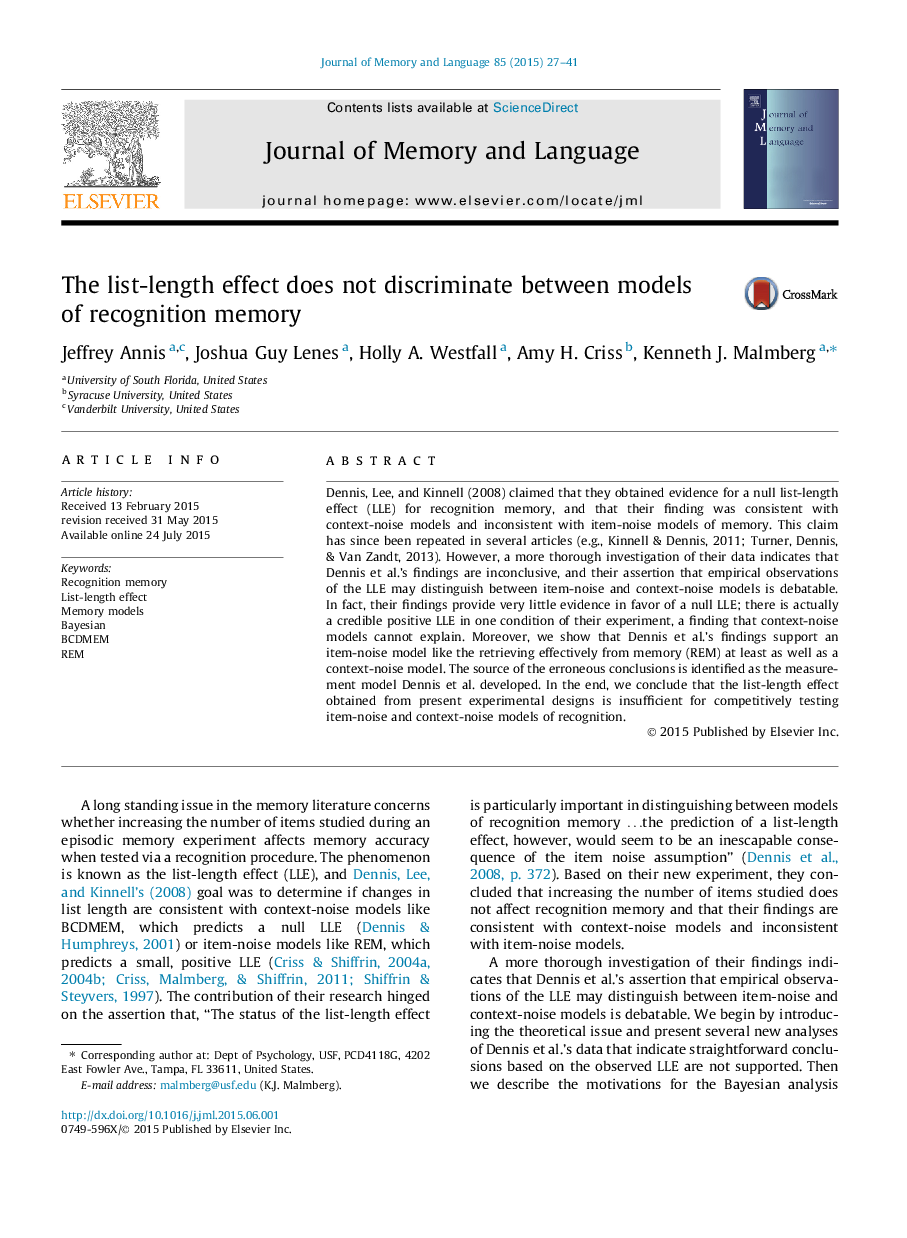| Article ID | Journal | Published Year | Pages | File Type |
|---|---|---|---|---|
| 931768 | Journal of Memory and Language | 2015 | 15 Pages |
•We provide a thorough investigation of Dennis, Lee, Kinnell’s (2008) data.•Their findings provide little evidence in favor of the null list-length effect.•The list-length effect is not sufficient to test item and context-noise models.
Dennis, Lee, and Kinnell (2008) claimed that they obtained evidence for a null list-length effect (LLE) for recognition memory, and that their finding was consistent with context-noise models and inconsistent with item-noise models of memory. This claim has since been repeated in several articles (e.g., Kinnell & Dennis, 2011; Turner, Dennis, & Van Zandt, 2013). However, a more thorough investigation of their data indicates that Dennis et al.’s findings are inconclusive, and their assertion that empirical observations of the LLE may distinguish between item-noise and context-noise models is debatable. In fact, their findings provide very little evidence in favor of a null LLE; there is actually a credible positive LLE in one condition of their experiment, a finding that context-noise models cannot explain. Moreover, we show that Dennis et al.’s findings support an item-noise model like the retrieving effectively from memory (REM) at least as well as a context-noise model. The source of the erroneous conclusions is identified as the measurement model Dennis et al. developed. In the end, we conclude that the list-length effect obtained from present experimental designs is insufficient for competitively testing item-noise and context-noise models of recognition.
